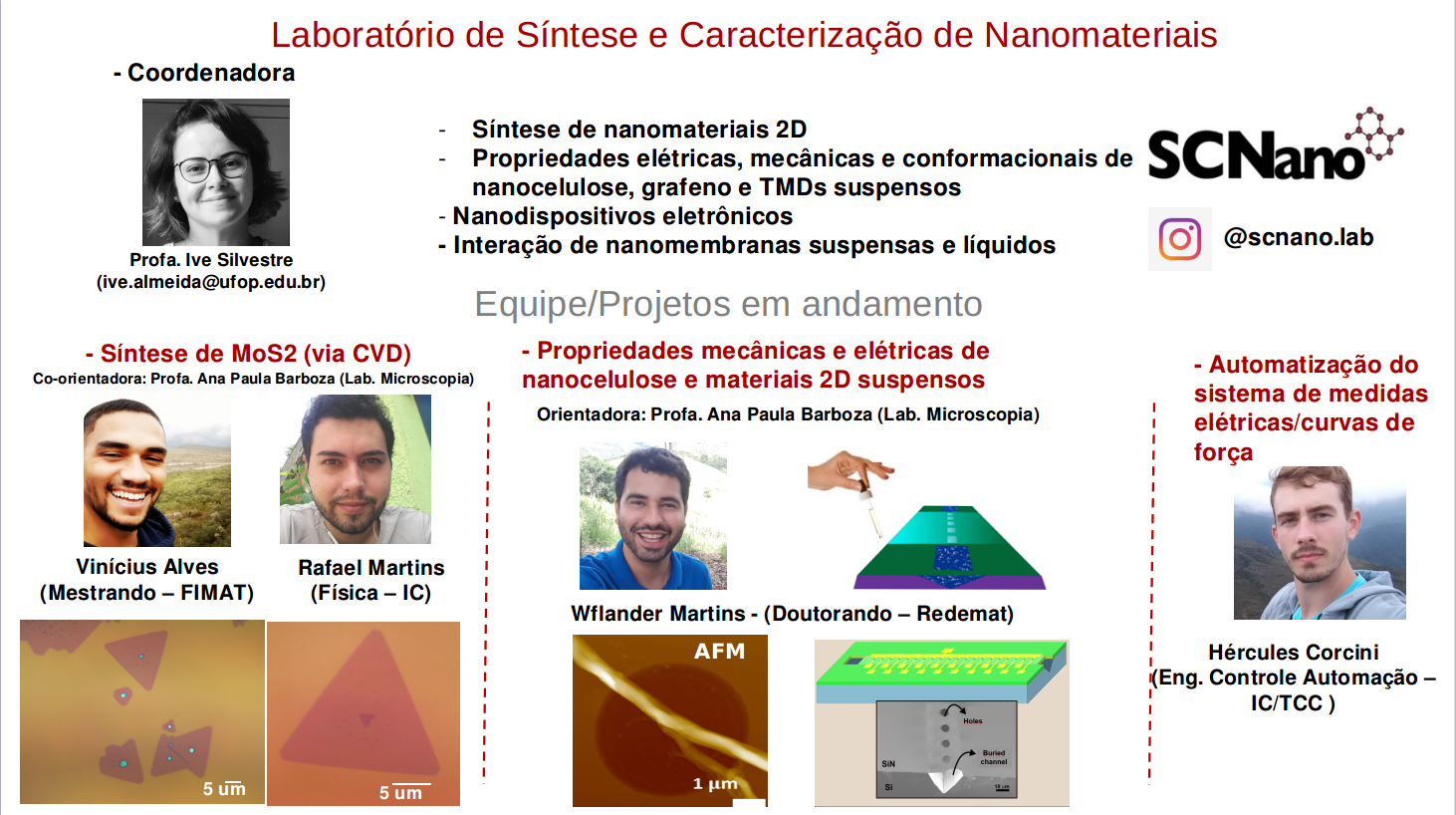The research area of Nanomaterials Growth and Synthesis within our group is led by Professor Ive Silvestre. Our team focuses on the controlled growth and synthesis of nanomaterials with tailored properties for advanced technological applications.
Nanomaterials Growth
The controlled growth of nanomaterials is essential for creating materials with specific structures and properties. Our research involves various methods to achieve precise control over the size, shape, and composition of nanomaterials.
Techniques for Nanomaterials Growth:
- Chemical Vapor Deposition (CVD): This is a primary method for synthesizing high-quality two-dimensional materials such as transition metal dichalcogenides (TMDs), graphene, and nanocellulose. CVD allows for the precise control of thickness and composition by decomposing gaseous precursors on a substrate at high temperatures.
Nanomaterials Synthesis
Synthesis techniques are vital for producing nanomaterials with desirable properties for specific applications. Our work involves developing and optimizing synthesis protocols to create materials with enhanced performance.
Our Research Focus
Our research aims to advance the understanding and application of nanomaterials through innovative growth and synthesis techniques. We explore the potential of these materials in various fields, including electronics, energy, and nanotechnology.
- Two-Dimensional Materials: Special focus is placed on synthesizing and characterizing TMDs, graphene, and other exfoliated 2D materials. These materials are crucial for the development of next-generation electronic and optoelectronic devices.
- Nanowires and Nanotubes: We develop growth techniques for nanowires and nanotubes, exploring their applications in sensors, transistors, and energy storage devices.
- Nanoparticles and Quantum Dots: We use nanoparticles with controlled size or applications in catalysis.
- Nanodevices: Our research includes the development of nanodevices, focusing on electronic applications and the interaction of suspended nanomembranes with liquids. This involves studying the mechanical and electronic properties of nanomembranes in various environments.
- Nanocellulose: We study different types of nanocellulose, including cellulose nanocrystals and cellulose nanofibers. Nanocellulose is a renewable and biodegradable material with significant potential in sustainable technologies. Its unique mechanical properties and high surface area make it suitable for applications in flexible electronics, renewable energy storage, and environmentally friendly composites.
Facilities and Equipment
Our research is supported by advanced facilities and equipment, including various furnaces and fume hoods designed for the growth of nanomaterials. These tools enable the precise control necessary for high-quality synthesis and growth processes.
- Furnaces: We utilize different types of furnaces capable of reaching high temperatures required for processes like CVD.
- Fume Hoods: Our fume hoods are essential for safely handling the chemical precursors and byproducts involved in nanomaterial synthesis.

